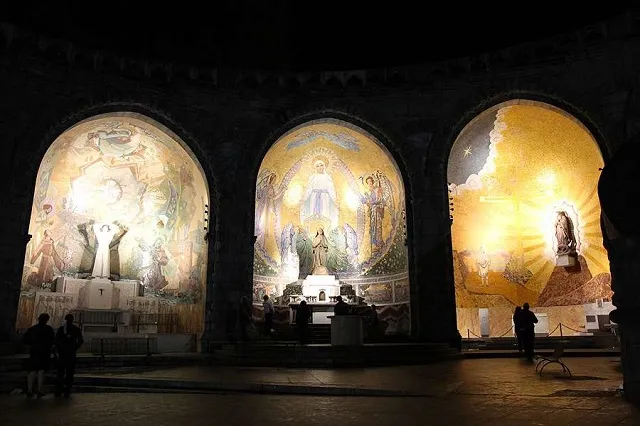
Vatican City, Apr 2, 2017 / 01:24 am (CNA/EWTN News).- On Saturday, Pope Francis moved the responsibility for Catholic shrines to be under the Congregation for the Promotion of the New Evangelization, stating that shrines, as sacred places, are especially suitable to conversion and the strengthening of faith.
April 1 the Pope issued the edict – called a motu proprio – formally moving the competency of shrines from the Congregation for Clergy to the Vatican department on the New Evangelization.
“The large influx of pilgrims, the humble and simple prayer of God's people alternating in the liturgical celebrations, the fulfillment of so many graces that many believers certify that they have received and the natural beauty of these places allow you to see how the shrines…express an irreplaceable opportunity for evangelization in our time,” Francis states in the letter.
According to the document, titled “Ecclesia in Sanctuarium,” the tasks of the congregation will include: the establishment of new national and international shrines, studying and implementing measures for promoting their role in evangelization, and promoting systematic pastoral care of the shrines and specific training for those who operate them.
They will also be in charge of the promotion of national and international meetings to promote communal pastoral renewal and pilgrimages to various shrines, spiritual guidance for pilgrims, and “cultural and artistic enhancement of the Shrines according to the via pulchritudinis (way of beauty) as a particular mode of evangelization of the Church,” Pope Francis said.
Shrines and other places of pilgrimage “despite the crisis of faith that invests the contemporary world, are still perceived as sacred spaces to which pilgrims go to find a moment of rest, silence and contemplation in the often hectic life of today,” the letter continues.
“A hidden desire creates for many a nostalgia for God; and shrines can be a real refuge to rediscover themselves and regain the necessary strength for their conversion.”
People have made pilgrimages to holy sites since the first century, the Pope said, and even today, in every part of the world, they remain “a distinctive sign of the simple and humble faith of believers.”
The shrine is a “sacred place,” where the celebration of the sacraments, especially Reconciliation and the Eucharist, as well as the witness of charity, “express the great commitment of the Church for evangelization; and therefore it stands as a genuine place of evangelization…” he stated.
The proclamation, which was signed by Pope Francis on Feb. 11, the Feast of Our Lady of Lourdes, goes into effect 15 days from its publication.
Also April 1, the Vatican announced the Pope’s appointment of 11 new members to the Congregation for Clergy, including Fr. Hans Zollner SJ, who heads the Center for Child Protection (CCP) at the Pontifical Gregorian University in Rome and is also a member of the Vatican's Pontifical Commission for the Protection of Minors.
Francis’ appointment of Fr. Zollner to the Congregation for Clergy reinforces his strong commitment to fight abuse, especially at the level of priestly formation.
The other nominations to the department include seven priests, one archbishop and two lay professors.
Their names are: Archbishop Erio Castellucci, Arcchbishop of Modena-Nonantola; Fr. Maurice Monier, Pro-Dean of the Roman Rota; Msgr. Vito Angelo Todisco, Prelate Auditor of the Roman Rota; Fr. Bruno Esposito, O.P., professor at the Pontifical University of St. Thomas Aquinas; Fr. George Augustin, S.A.C., dogmatic theologian; Fr. Ennio Apeciti, Rector of the Pontifical Lombard Seminary; Fr. Janusz Kowal, S.I., professor at the Pontifical Gregorian University; Fr. Marko Ivan Rupnik, S.I., consultor of the Pontifical Council for the Promotion of the New Evangelization; Professor Luigi Janiri, specializing in psychiatry and psychopathology at the University of the Sacred Heart; Professor Paolo Papanti-Pelletier, judge of the Court of Vatican City State.
If you value the news and views Catholic World Report provides, please consider donating to support our efforts. Your contribution will help us continue to make CWR available to all readers worldwide for free, without a subscription. Thank you for your generosity!
Click here for more information on donating to CWR. Click here to sign up for our newsletter.




Leave a Reply